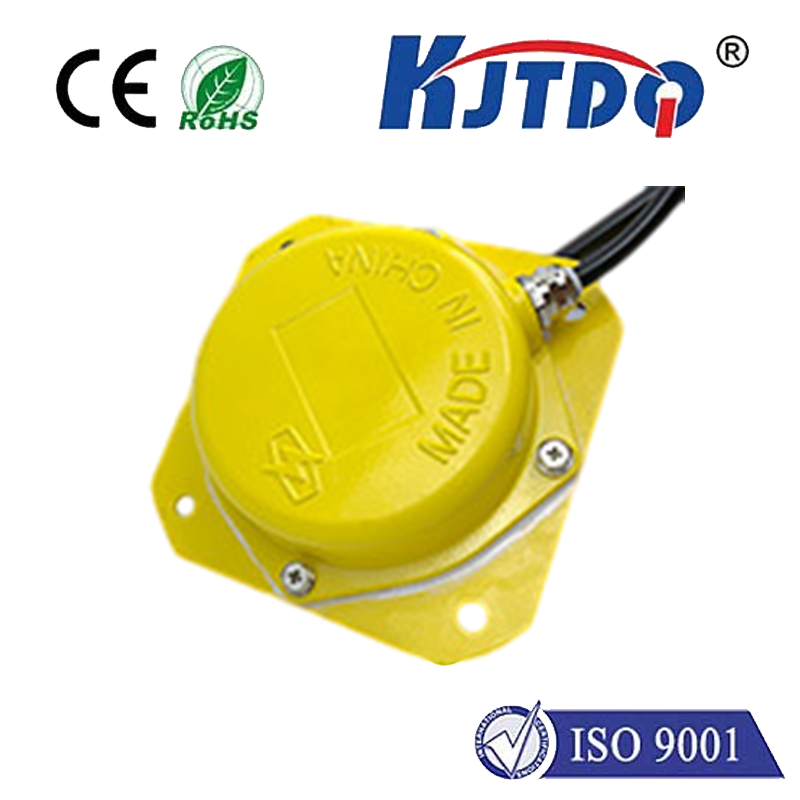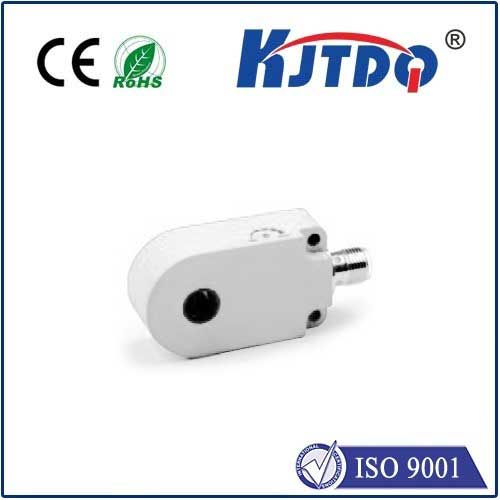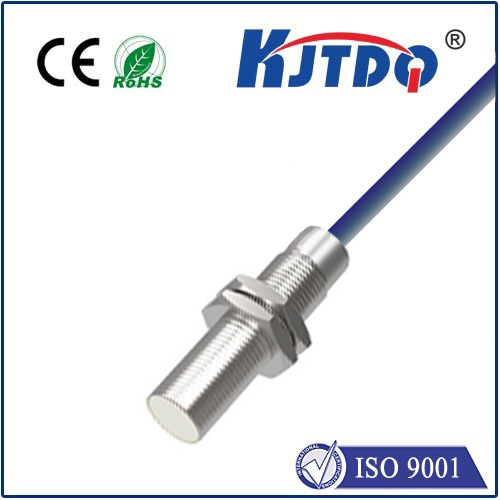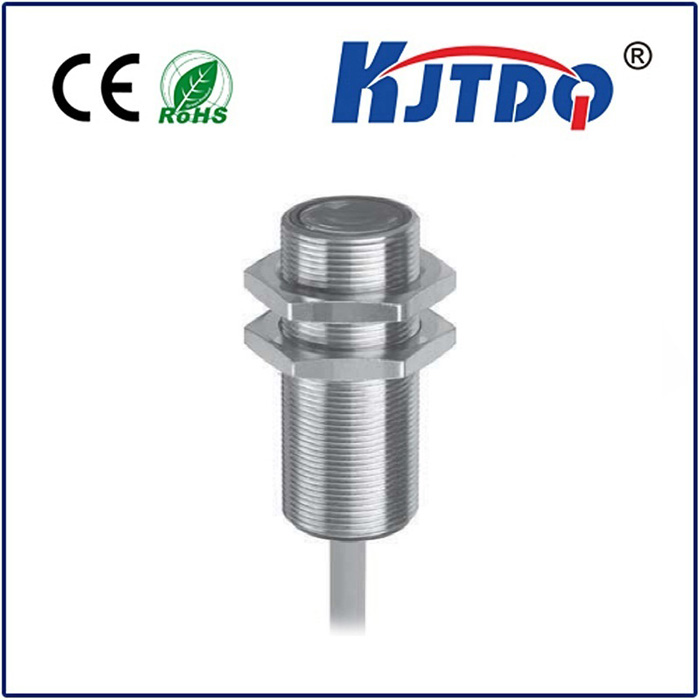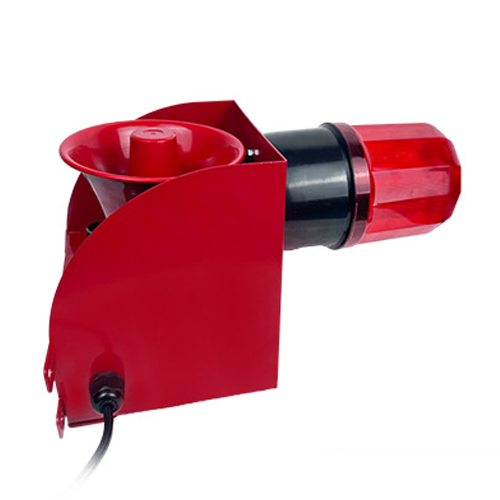4mm m12 proximity sensor switch
- time:2025-09-08 09:29:12
- Click:0
The Mighty Mini: Unlocking Efficiency with the 4mm M12 Proximity Sensor Switch
Imagine machines operating flawlessly, components aligning perfectly, and production lines humming with uninterrupted rhythm. A critical element enabling this industrial symphony is often an unassuming hero: the proximity sensor. And within this vital category, the 4mm M12 Proximity Sensor Switch stands out as a powerhouse of precision packed into a remarkably compact form. Designed for demanding automation environments, this sensor offers reliable, non-contact detection where space is tight and accuracy is non-negotiable.
So, what exactly is a 4mm M12 Proximity Sensor Switch? At its core, it’s an inductive proximity sensor. Its primary function is to detect the presence or absence of metallic objects (typically ferrous metals like steel or iron, though models for non-ferrous detection exist) without any physical contact. The “4mm” denotes its nominal sensing distance – it can reliably detect a standard target (usually a square steel plate) from up to 4 millimeters away. The “M12” refers to its ubiquitous cylindrical threaded housing diameter, specifically 12 millimeters. This standardized size makes it incredibly versatile and easy to integrate into countless applications using readily available M12 mounting nuts and brackets.
The Magic Behind the Detection: Inductive Sensing
The working principle is elegant and robust. The sensor head houses an oscillator coil that generates an electromagnetic field. When a conductive metal object enters this field (within the specified 4mm detection range), it induces eddy currents on the object’s surface. These eddy currents absorb energy from the oscillator, causing its amplitude to decrease. The sensor’s built-in circuitry monitors this change in oscillation. Once the amplitude drop reaches a predetermined threshold, the sensor’s solid-state switch changes state (either opening or closing an electrical circuit). This switch signal is then sent to the machine’s controller (like a PLC), indicating the object’s presence or absence. No moving parts means exceptional reliability, long life, and immunity to mechanical wear and tear.
Why Choose the Compact 4mm M12 Form Factor?

This specific combination offers compelling advantages, particularly in modern, densely packed machinery:
- Space Optimization: The small M12 diameter is ideal for confined spaces where larger sensors simply won’t fit. Think robotic arms, compact assembly stations, tool changers, or miniature conveyor sections. The 4mm sensing range provides sufficient detection capability for precise positioning without requiring excessive clearance.
- Standardization & Ease of Integration: The M12 thread is an industry standard. This simplifies sourcing, mounting, and replacement. M12 connectors (available in various pin counts and coding styles like A-coded) plug directly into common industrial cabling systems, ensuring quick and secure connections. This standardization drastically reduces installation time and complexity.
- Robustness for Industrial Environments: These sensors are typically built to withstand harsh conditions. Look for robust ratings like IP67 (Ingress Protection) or even IP69K, meaning they resist dust intrusion and can handle powerful water jets or temporary submersion. They are also generally resistant to vibration, shock, and temperature fluctuations common on factory floors.
- High-Speed Operation: With no mechanical delays, inductive proximity sensors switch incredibly fast. The 4mm M12 models can typically handle switching frequencies in the hundreds of Hertz, making them perfect for detecting fast-moving parts on high-speed lines.
- Output Flexibility: They are commonly available in both NPN (sinking) and PNP (sourcing) transistor output configurations (3-wire), as well as analogue variants (current or voltage proportional to distance). NPN and PNP choices ensure compatibility with virtually any PLC input card.
- Flush or Non-Flush Mounting: Many 4mm M12 sensors offer flush-mount capability. This allows them to be installed embedded in a metal bracket without affecting their sensing range, offering crucial protection against damage. Non-flush versions offer a slightly longer sensing range relative to their size.
Where Do 4mm M12 Proximity Sensors Shine? Applications Galore!
Their small size, reliability, and detection precision make them ubiquitous across automation:
- Position Verification: Confirming a cylinder is retracted/extended, a slide is in home position, or a part has been correctly loaded into a fixture (“in-position” sensing).
- End-of-Stroke Detection: Reliably signaling when a pneumatic or hydraulic actuator reaches its end point.
- Object Counting: Detecting individual parts passing a point on a conveyor or chute.
- Presence/Absence Checking: Ensuring components are present before a process step begins (e.g., pallet load/unload stations, assembly verification).
- Speed Monitoring: Used in conjunction with a toothed wheel or encoder disk to measure rotational speed.
- Machine Safety: Acting as part of safety interlocks to confirm guards are closed or potential hazards are clear.
- Robotics: Ideal for tool detection on robotic end effectors or proximity sensing within tight joint spaces.
- Material Handling: Detecting metal guides, carriers, or the ends of tracks and conveyors.
Selecting the Right 4mm M12 Proximity Sensor:
While standardized in size and basic function, consider these factors:
- Target Material: Ensure the sensor is specified for the metal you need to detect (ferrous, non-ferrous, stainless steel). Ferrous sensors are most common.
- Output Configuration: Match the NPN or PNP output to your PLC or controller input requirements. Check the voltage rating (commonly 10-30V DC).
- Connection Style: Choose between pre-wired cables or sensors with an integrated M12 connector (male or female).
- Flush vs. Non-Flush: Decide based on your mounting environment and required sensing characteristics. Flush mounting offers better protection.
- Environmental Ratings: Verify IP ratings (IP67 is standard, IP68/IP69K for harsher washdowns) and temperature range compatibility.
- Special Features: Some models include IO-Link communication for advanced diagnostics and parameterization, or built-in indicators.
Installation Best Practices
Maximize performance and longevity:
- Ensure Adequate Clearance: While compact, allow space for the connector/cable and ensure nearby metal structures are outside the specified installation clearance zone (usually 1-2 times the sensor diameter) to avoid false triggering.
- Secure Mounting: Tighten the M12 mounting nut securely to prevent movement due to vibration.
- Electrical Connections: Follow wiring diagrams meticulously, ensuring correct polarity for DC sensors. Protect cables from abrasion and strain.
- Avoid Contamination: Keep sensing faces clean from excessive buildup of metal shavings, dust, or oils, which can marginally reduce sensing distance.
In Conclusion: The Unsung Hero of Precision Automation
The 4mm M12 Proximity Sensor Switch is far more than just a small component. It embodies the principle of achieving maximum functionality in minimal space. Its standardized M12 interface guarantees easy integration, while its robust inductive sensing technology delivers reliable, contactless detection within its crucial 4mm range. From verifying the position of tiny components to ensuring the smooth operation of complex machinery, this compact powerhouse plays a pivotal, often unseen, role in driving efficiency, reliability, and precision across countless industrial automation applications. Its blend of small size, big performance, and industrial toughness makes it an indispensable tool for engineers designing the factories of today and







